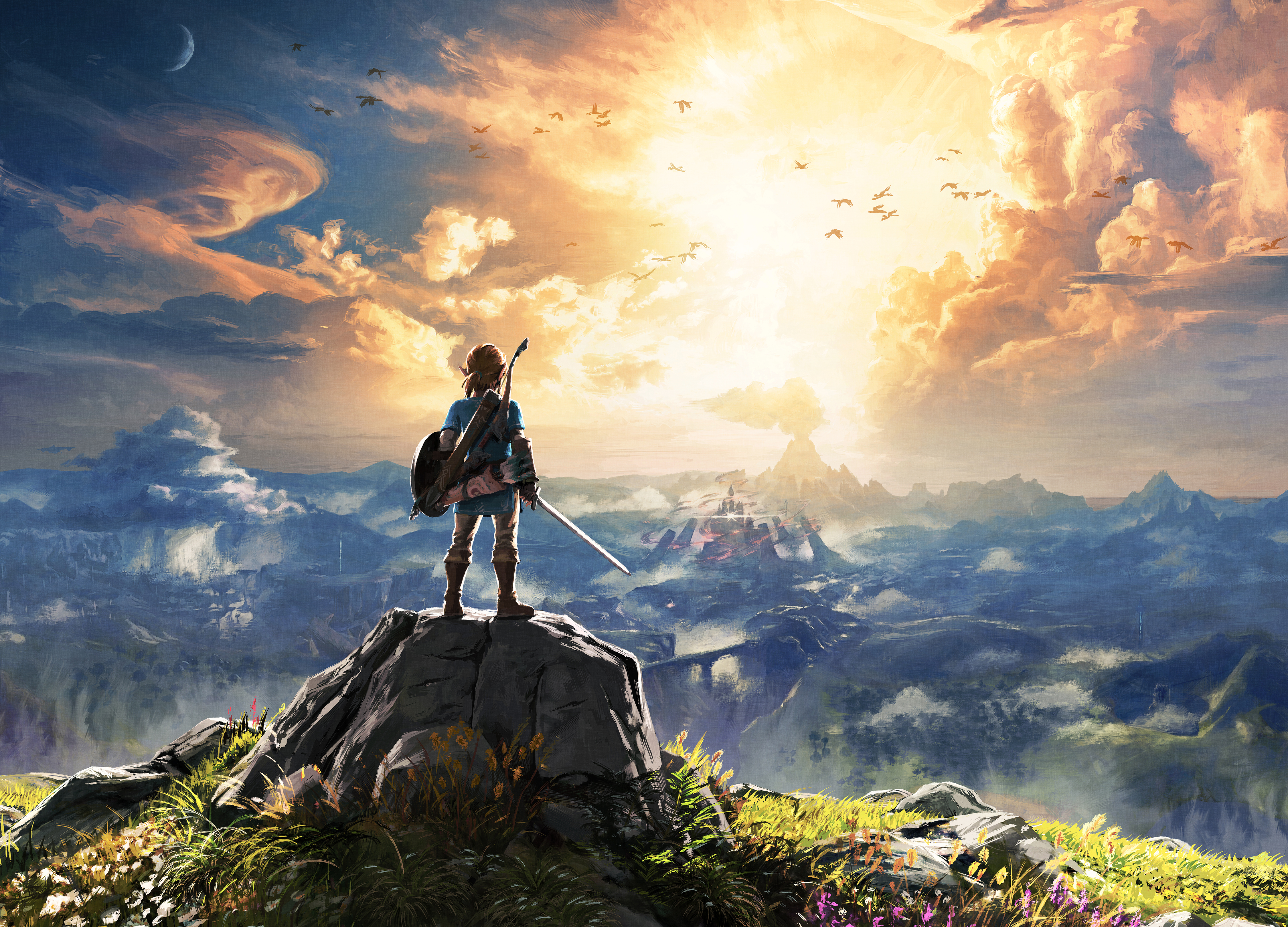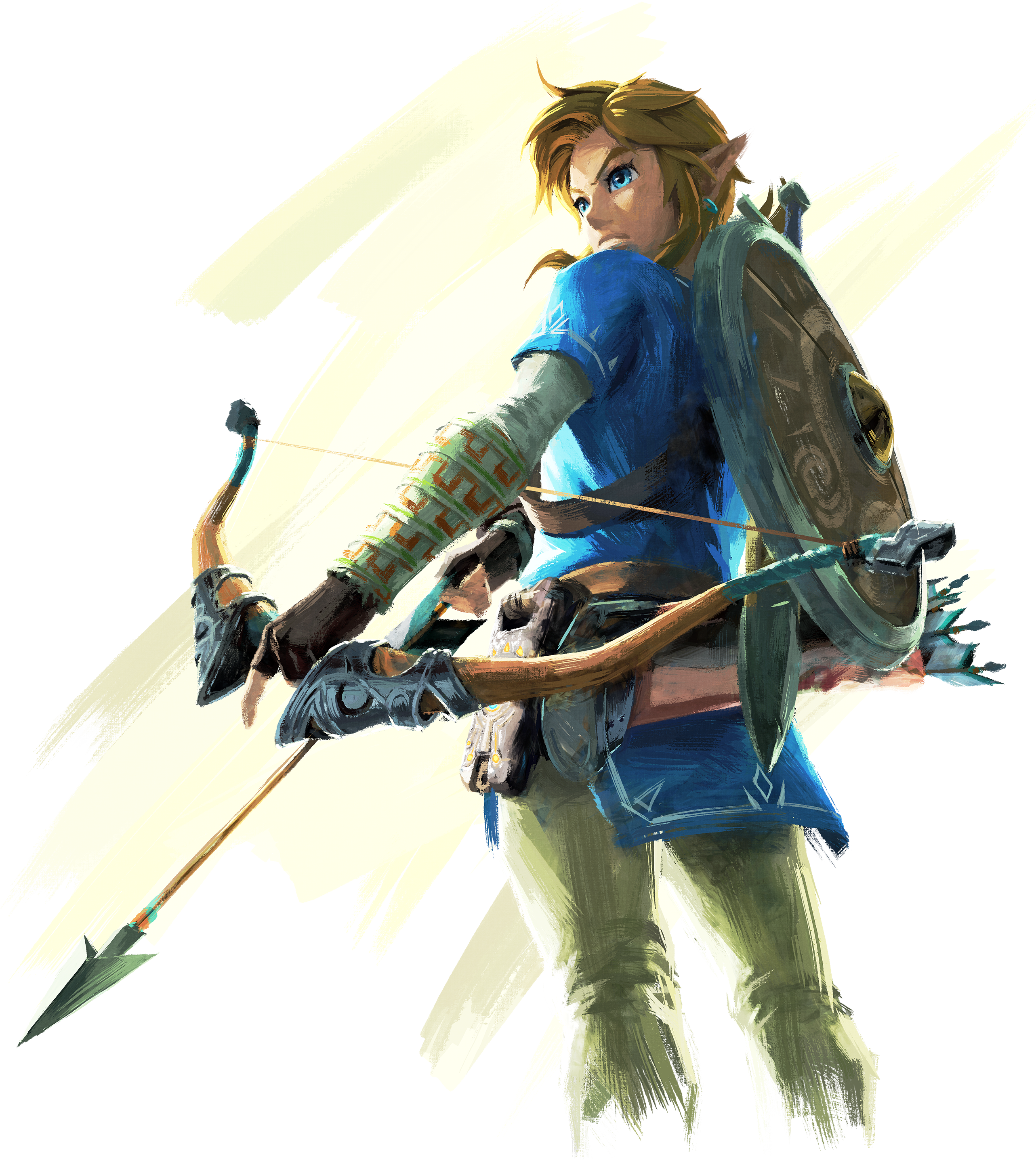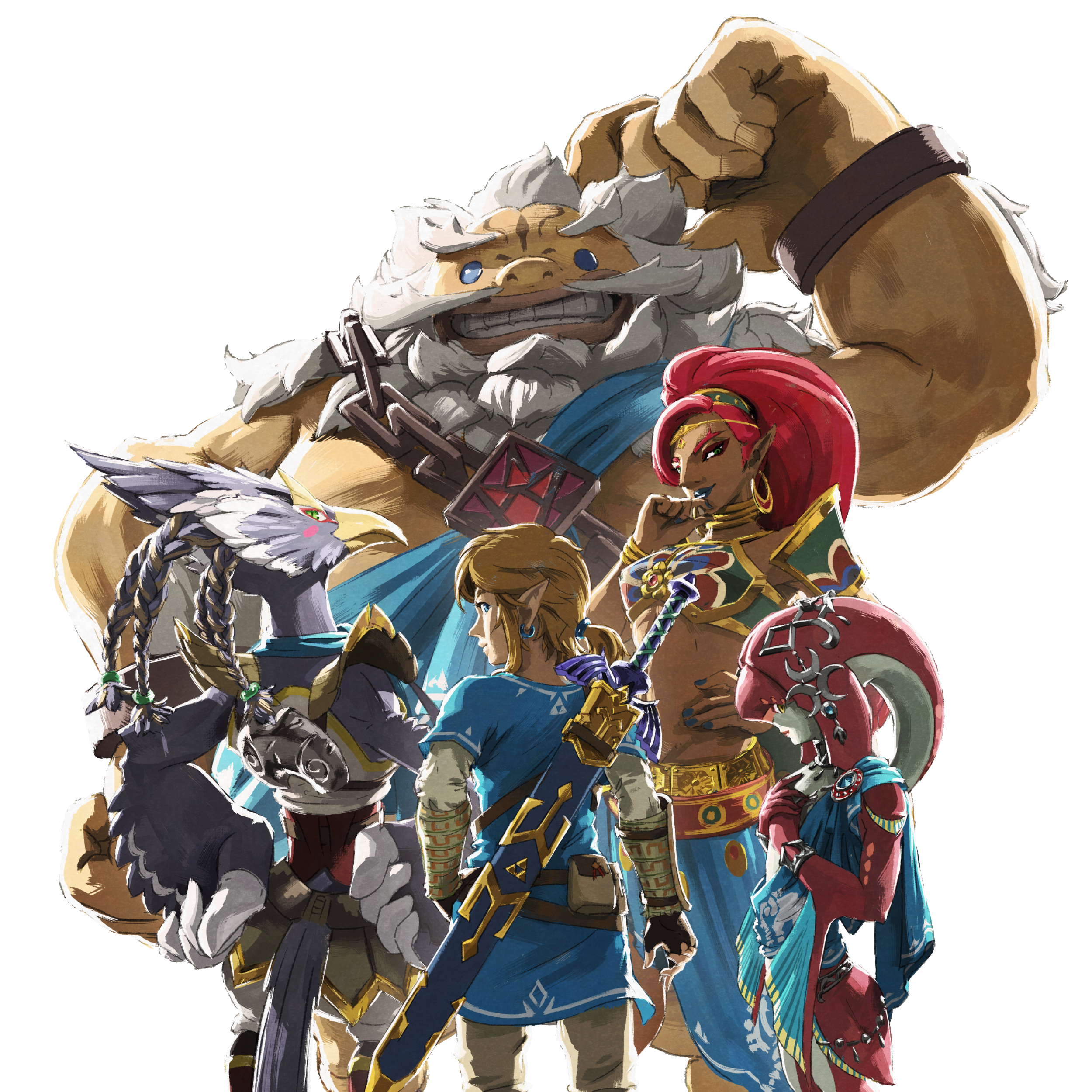Character Creation
Please download an offline copy of any page you may need. "Alt+Shift+P" can be used to make a printable PDF of any page. See also archives. | ||
|
Player's Guide |
System Reference |
Compendium
 |
| In the years since 5th edition was released, many powerful character builds have become commonly known: "sorcadian," a monk that can cast hex, a variant human that can deal over 20 damage at 1st level, a druid-cleric that can heal hundreds of hit points by 2nd level, outright broken bard-rogue ability checks, and so many more. Hyrulean characters are designed to minimize multiclass exploits, and to omit options that are so powerful they are ubiquitous, but are still meant to be playable alongside these powerful character builds. A Hyrulean character consequently may be unable to match the most optimized builds possible in official D&D, but with minimal effort a mono-classed Hyrulean character will often be much more powerful and versatile than a comparable minimal effort build in D&D. |
Contents
Step 0: Consult your DM
Your DM ultimately decides what methods can be used to generate your character. Only use whatever method(s) of character creation your DM endorses.
If adhering to Legends of Hyrule content, your DM might also consider Random Character Creation to decide more factors by rolling dice, or Advanced Character Creation for creating characters above 1st level.
You can use a sheet of paper, a digital notepad, or anything you like to record the details and statistics for your character. A typical character sheet for Dungeons & Dragons should work just fine for Legends of Hyrule, too.
Step 1: Determine Ability Scores
As you may already know, one of the most fundamental aspects of a player-character is his or her six numerical ability scores. You can choose one of the three methods below to determine your ability scores. These methods are designed to be interchangeable; if one player wants to roll ability scores and another wants to use point-buy, the scores could be a little better or a little worse, but almost never to the extent either player will feel useless by comparison.
However you generate your ability scores, be sure to record them.
Method A: Standard Array
You have six numerical scores: 14, 13, 12, 11, 9, and 7. You can assign these scores to your six abilities in whichever order you like.
This method creates a very balanced character. These scores can be easily optimized with your race and class to create an effective individual who still has room to grow, and doesn't have any glaring weaknesses.
Method B: Rolled Array
Roll 2d8+2, and record the number you rolled. Do this five more times, until you have six numbers. The six numbers you rolled become your six ability scores, which you can assign to your six abilities in whatever order you like.
This method's average result is precisely 11, with a small chance of being as low as 4 or as high as 18. There's only about a 9% chance of rolling even a single 18 across all six scores, and equally low odds of rolling even a single 4. There's about a 64% chance you'll roll at least a single number above 14, and about a 20% chance you won't roll a single number above 13. The most probable scores will be comparable to the Standard Array. This a good option if you want something a bit different, or want to take a chance at being above-average. With a method like this, it's important to have a DM or another player watch and verify your rolls.
If you would be disinterested in committing to a character that isn't optimized, it is best if you choose a method other than this one.
| Score | Cost |
|---|---|
| 7 | 0 |
| 8 | 1 |
| 9 | 2 |
| 10 | 3 |
| 11 | 4 |
| 12 | 5 |
| 13 | 7 |
| 14 | 9 |
Method C: Point-Buy
This method gives you nuanced control over the exact numbers your ability scores can be, which may be a preferred result if you enjoy optimizing your character's capabilities.You have 27 points to spend on your ability scores. The cost of each score is shown in the adjacent table. For example, a score of 13 costs 7 points. This method cannot be used to decrease a score below 7 or increase a score above 14.
Step 2: Choose a Race
The world of Hyrule is inhabited by countless different creatures, though hylians are certainly the most familiar. As your fantasy race, choose one of the races of light summarized below, or other races your DM has specifically approved. Be sure to choose a subrace as well, and note any other decisions afforded by your race.
Your chosen race and subrace will increase one or more of the ability scores you chose in step 1. Your race also affords you several racial features you may want to record on your character sheet. Each race of light is summarized below, but click its name for a detailed page on the race.
- Hylians are the most widespread, influential, and industrious people of Hyrule. Most travelers and adventures hail from this familiar race. Unlike most races, hylians are always expected to be fully clothed. Link, Zelda, Impa, and most well-known Hyrulean characters are hylians.
- Zora are amphibious people who typically live along coastlines and rivers, and often resemble fish. Many among them can innately wield magic. Sidon, Mipha, Ruto, and Oren are some of the most renowned zora characters. Link once even took the form of Mikau, a sea zora.
- Gorons are built like mountains, eat rocks, and wade through lava. Gorons are indomitable both as warriors and as friends. They only have one gender, which is considered male. Darunia, Daruk, Biggoron, Gorko, and Darbus are well-known gorons. Link once took the form of Darmani, a goron warrior.
- Gerudo are tall, powerful, beautiful women who resemble hylians in many superficial ways, but have stark red hair, deep tan skin, and tend to be much taller. Many adhere to a proud warrior culture. Most gerudo live deep in desert terrain. Ganondorf is the most infamous gerudo. Other renowned gerudo include Urbosa, Riju, Nabooru, Koume, and Kotake.
Adventurers might hail from these uncommon races, but not all legends feature them.
- Deku scrubs are Small wooden people with bark-like skin and leaf-like hair, who have many plant-like characteristics. Their tubular mouths are used to spit seeds as a means of defense. Some hylians consider scrubs to be wild monsters, but they may simply be misunderstood and perhaps paranoid. Link once took the form of a deku scrub.
- Rito are prideful bird-like people gifted with the ability to fly high in the sky. They typically live in mountains or other terrain that is easily defended from terrestrial creatures. There are two main varieties of rito: those who have arms which function as wings (highland), and those who slip their arms into sleeve-like wings to fly (coastal). Well-known rito include Medli, Revali, Kass, Quill, and Komali.
- Anouki are squat people with reindeer-like horns who almost universally wear parkas all day. They are most comfortable in wintery lands that most other races find unbearably cold. Though civilized and organized, they tend to live far away from most other races of light.
- Koroks seem to be made of wood, have stubby limbs, and wear leaf-masks in lieu of faces. Most koroks have an incredibly positive and innocent attitude, which may be why they are sometimes called "children of the forest" despite never really being children. This mysterious, reclusive race all respect and admire the Great Deku Tree as a patriarch. Renowned koroks include Makar, Hestu, and Chio.
- Kokiri are almost indistinguishable from hylian children, but never seem to age beyond 8 or 9 years old. Like koroks, they typically live secretive lives in forests under the protection and guidance of the Great Deku Tree. A kokiri is almost always guided by a fairy friend. Some well-known kokiri include Saria, Fado, and Mido.
Step 3: Choose a Class
Choosing your class is perhaps the most involved part of character creation. Your class represents the general shape of your capabilities, especially those you employ in combat. Choose one from those listed below. Click a class's name for a fully detailed page.
- Fighter, one who employs weapon attacks and exudes physical prowess; most incarnations of Link are some form of fighter; Strength or Dexterity is usually a fighter's most important ability score, followed by Constitution
- Opportunist, one who wields finesse and tact, exploiting weaknesses both on the battlefield and in city streets; Linkle, Tingle, Kass, Sheik, and even Garo are various opportunists; Dexterity is typically an opportunist's most important ability score
- Sage, one who holds mysterious elemental powers and restorative magic bestowed by the gods; most incarnations of Princess Zelda are sages; Wisdom is a sage's most important ability score
- Researcher, one who studies magic and casts spells from memorization and practice; Midna, Maple, Pura, Twinrova, and even Wizzrobes are all different kinds of researchers; Intelligence is a researcher's most important ability score
- Scion, one who inherited supernatural power directly from a powerful being like a dragon, a great fairy, or even a guardian stalker; Charisma is usually a scion's most important ability score
Depending on your choice, there are various other decisions you must make regarding your class, as detailed on each class's page. Opportunist or perhaps fighter is the most straightforward initially. If you chose sage or scion, you will need to choose a subclass right away, but other classes let you get a feel for things before you must commit to a subclass.
Step 4: Improve
An improvement represents a particular area of training or aptitude for your character, which may set you apart as a paragon or hero. As your improvement, you can gain one of the following benefits:
- Gain one feat for which you qualify.
- Increase two ability scores by 1 each.
- Increase one ability score by 2, but only if your race's Ability Score Increase doesn't already increase that same score by 2.
This improvement cannot increase an ability score above its maximum, which is initially 20.
Step 5: Equip
Some legendary heroes start without even so much as a sword, but thankfully your character has amassed some gear or wealth prior to the start of your campaign. Your character has a set of common clothes, an adventure pouch, and 10 days of rations plus up to 1,000 rupees worth of equipment. You can use these 1,000 rupees to "purchase" individual items such as armor and weapons. The equipment section has hundreds of different items with appropriate prices listed. Any rupees you have left over after these purchases end up in your wallet.
If you prefer, you can also forgo picking out individual items and instead take the "class gear" listed under your class. Each set of class gear adds up to about 1,000 rupees.
Step 6: Statistics
By now you should have already have several statistics recorded, including your speed based on your race, your known languages, your heart points from your class, and any proficiencies you have with saving throws, skills, and tools. It's time to record a final few statistics of your character if you haven't already done so.
Armor Class
The higher your AC, the harder it is to hit you in combat. If you are wearing armor, use the AC it provides. Some races or classes have a feature which grants you an AC as well, which you can use as it describes. If you lack such a feature and aren't wearing armor, your AC equals 10 + your Dexterity modifier.
Weapons
For each weapon your character wields, calculate the modifier you use when you attack with the weapon and the damage you deal when you hit. When you make an attack with a weapon, you roll a d20 and add your proficiency bonus (only if you are proficient with the weapon) and the appropriate ability modifier.
- For attacks with melee weapons, use your Strength modifier for attack and damage rolls. For a weapon that has the finesse property, such as a broadsword, you can use your Dexterity modifier instead.
- For attacks with ranged weapons, use your Dexterity modifier for attack and damage rolls. For a weapon that has the thrown property, such as a handaxe, you must use your Strength modifier instead (unless that weapon also has the finesse property).
Passive Perception
The higher your passive Perception, the harder it is for creatures to hide from your notice. Your passive Perception equals 10 + your Wisdom modifier. If you are proficient in Perception, you add your proficiency bonus as well.
Step 7: Describe
It's time to flesh out your character as a person, if you haven't done so already. You can describe your character in as much or as little detail as you like: appearance, personality, backstory, flaws, and more. Your character's race and class can help to inspire characterization ideas. You may also decide to give your character an alignment, though in Legends of Hyrule this is optional. Giving your character ideals to uphold and goals to achieve can be particularly helpful for your DM craft adventures suited to your character. If your character has relationships to other characters you namedrop—family members, work associates, peers—this can help the DM create better narratives, too.
At a bare minimum, you should at least decide on a name for your character. Your race lists examples of common or renowned names for members of that race. Most Hyrulean characters only have a given name, but you can add a surname if you like.
Final Step: Assemble
Legends of Hyrule is about adventurers working together. It is assumed your character will be in a party of two to ten adventurers each portrayed by a different player, all working together in a world fabricated by your DM. It's best to talk with your fellow players and DM about how your characters would meet and work together. Your group may even prefer to build their characters under a joint concept, such as being from the same village or having something else in common. Even if your characters come from completely different backgrounds, teamwork and cooperation greatly enhance your success in Hyrule. After all, it's dangerous to go alone.


